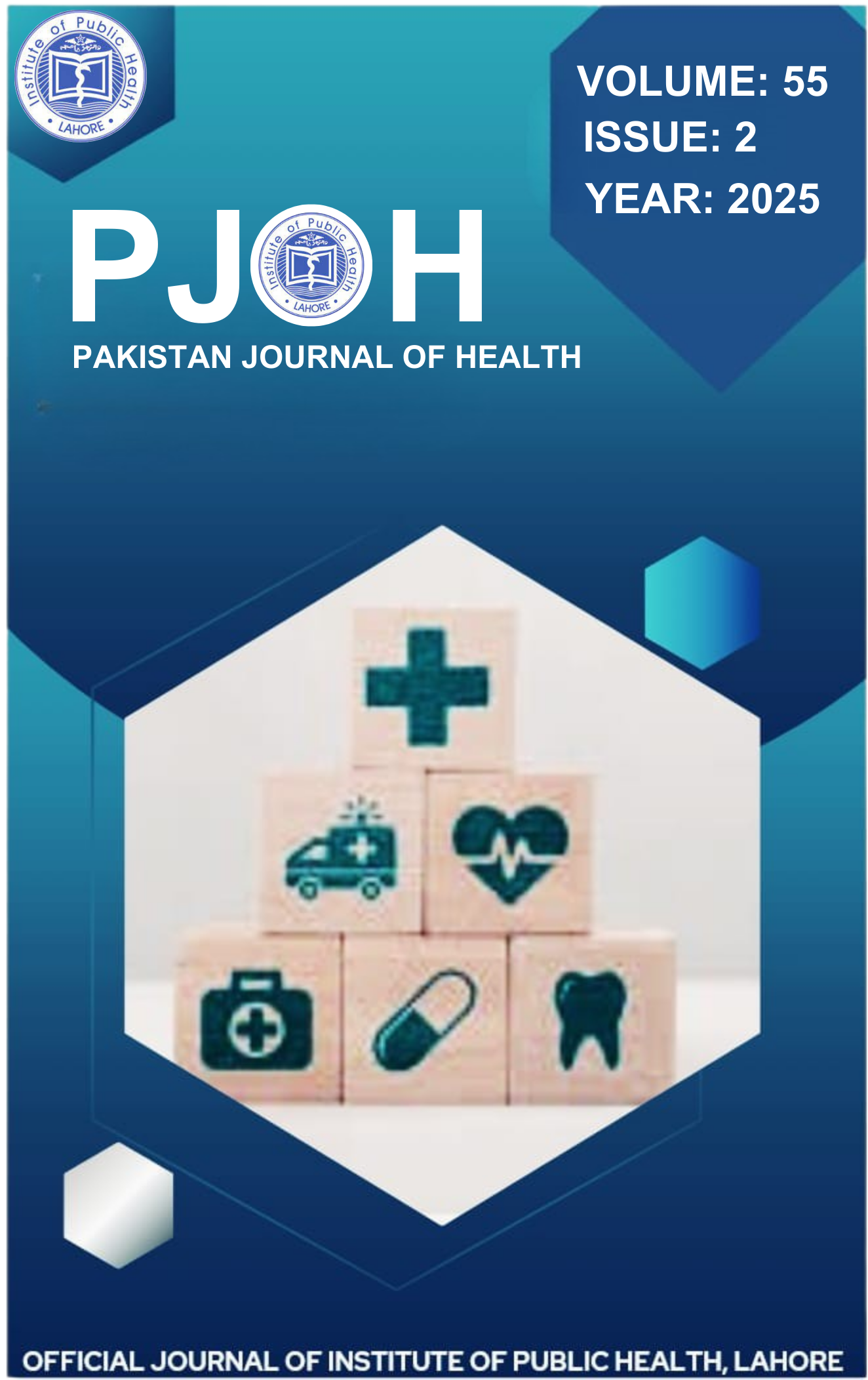Frequency Of Malaria In Flood Affected Areas Of Jhang District
Keywords:
Malaria, Jhang, Flood affected areas, AwarenessAbstract
Abstract: Malaria remains a persistent public health concern in Pakistan, particularly in flood-affected regions where stagnant water creates ideal breeding grounds for mosquitoes. This study aimed to assess the frequency of malaria in flood-hit areas of the Jhang district and to examine the role of environmental factors in its transmission, with a focus on Plasmodium vivax and Plasmodium falciparum infections.
Material and Methods: A cross-sectional study was conducted over three months in flood-affected communities of Jhang. A total of 100 participants were selected using a random sampling method. Rapid Diagnostic Tests ( RDTs ) were used to detect malaria infection, and data were analyzed using SPSS. Ethical clearance was obtained, and informed consent was secured from all participants. The study also collected data on symptoms and the use of protective measures such as bed nets.
Results: Out of 100 individuals tested, 9% were found positive for malaria. All positive cases exhibited symptoms like fever, headache, and chills. However, the use of preventive practices was inadequate; 44% of participants reported not using bed nets, and only 34% of malaria-positive individuals were aware of malaria prevention methods.
Conclusion: The low positivity rate may reflect the effectiveness of early detection and treatment, yet the gaps in prevention highlight a need for improved community education. Strengthening health awareness campaigns and promoting the consistent use of protective tools like bed nets are essential to reduce the risk of malaria, especially in flood-prone and environmentally vulnerable areas.

